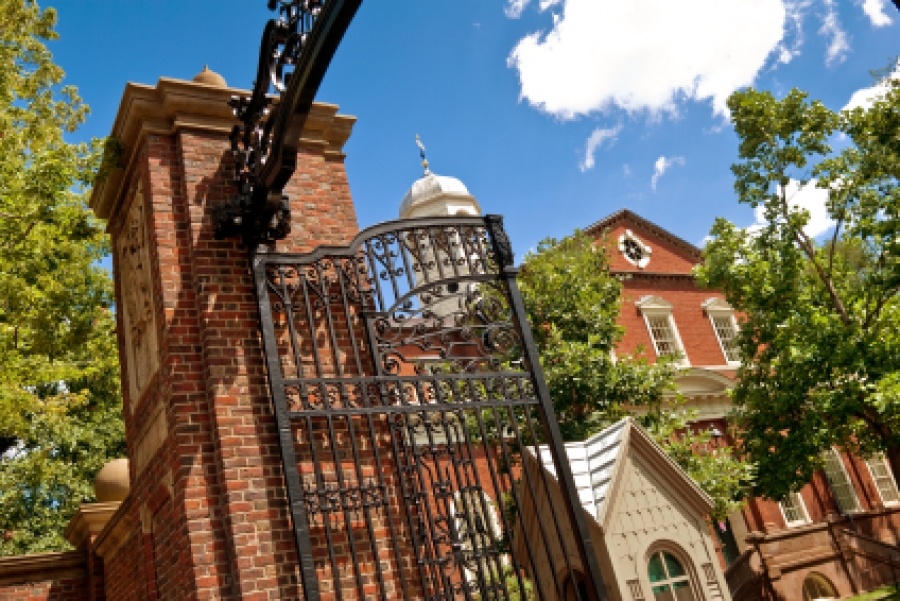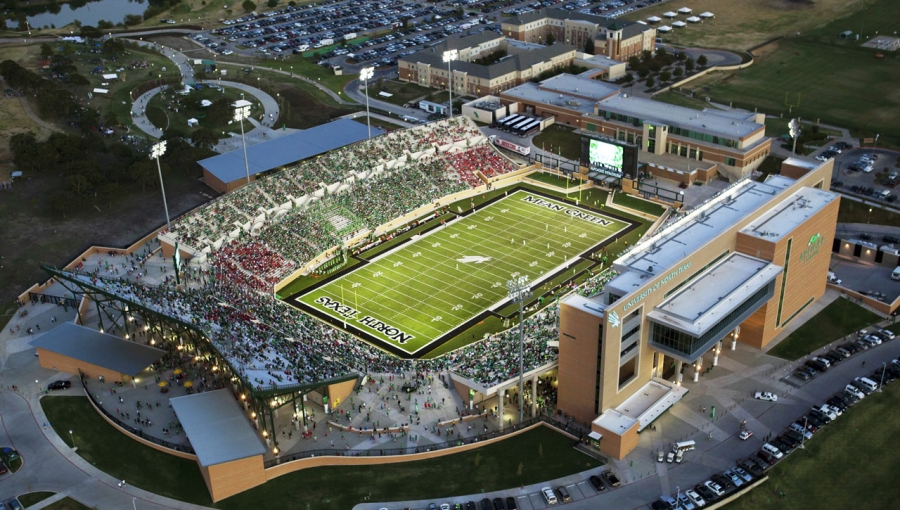Energy and Sustainability on Campus: Making the Grade
Video
American universities have committed to greening their campuses. Three institutions — the University of Michigan, the University of California, and University of Pennsylvania — share their experiences.
Whenever you flip a light switch or adjust a thermostat at the University of Michigan in Ann Arbor, you’re unwittingly interacting with Henry "Hank" Baier, or at least with his department. Baier, Associate Vice President for Campus Facilities and Operations, oversees a city-size infrastructure supporting 80,000 students, faculty, and staff on a 3,200 acre campus with 500 major buildings, including 150 health clinics, three hospitals, two golf courses, and “The Big House,” also known as Michigan Stadium, the largest sports arena in the United States. As Baier sees it, “Energy is the lifeblood of our competitive society.” And by extension, the lifeblood of the university. “Our energy consumption and environmental footprint has become more important at the University of Michigan, because it’s become more and more important to our students and faculty,” says Baier. It’s become more costly, too; Baier’s campus devours $155 million energy dollars every year, meaning the concept of sustainability has become a fiscal necessity as well as an environmental imperative.
 Image courtesy of The University of Michigan
Image courtesy of The University of Michigan
University of Michigan in Ann Arbor
In recognition of the impact that campuses have on America’s energy future, organizations such as the Sustainable Endowments Institute and the American College & University Presidents’ Climate Commitment (ACUPCC) have focused on evaluating and formalizing the drive toward reduced energy consumption on campus. The first creates a report card evaluating the environmental achievements at institutions of higher learning, and the latter asks university presidents to sign a pact pledging to eliminate their campuses’ net greenhouse gas emissions. This year, the University of Michigan (U-M) earned a solid B on the 2011 College Sustainability Report Card. Only eight schools of the 300 rated earned an A, including Yale and the University of Wisconsin-Madison. Large institutions like U-M, with many older buildings and high-consumption facilities such as hospitals and laboratories, face greater challenges in meeting the highest standards of energy efficiency, but the dollar dividends can be huge. Under the university’s Planet Blue energy conservation program, 70 buildings on the U-M campus underwent energy-efficiency upgrades, saving more than $4 million each year, according to U-M president Mary Sue Coleman. In a speech last month, Coleman outlined a series of environmental goals for the university and committed $14 million to improve campus operations, in addition to ongoing investments of $20 million, and more than $60 million that have gone toward energy-efficient buildings. “Those efficiencies save both dollars and energy during a time of tight resources,” Coleman says.
“Facilities and research have shifted to work together in setting goals and creating them...to challenge us, stretch our goals and even exceed them.” — Henry "Hank" Baier

College and university campuses are uniquely positioned to affect the United States' energy future. Higher education represents a $461 billion-a-year industry that in turn spends billions on energy and infrastructure every year, according to the National Center for Education Statistics (NCES) Digest of Education Statistics, 2010. And the footprint of higher education is widening — enrollment between 2000 and 2013 is expected to increase by 23%, according to projections made by the NCES. While the energy consumed in higher education facillties still only represents about 2%–3% of the United States' carbon footprint, “it represents 100% of the education footprint,” states the ACUPCC web site, referring to the pivotal role that higher education plays in fostering a culture of conservation, a culture that does not come entirely from the top down, from the institution to the students, but actually more likely is shaped by the students.
The Blue Planet initiatives at U-M started with student activists urging administrators to take a closer look at the university’s environmental practices. “The students have become much more sophisticated. They’re not just activists telling us what we should do, they come with practical solutions,” Baier says. Baier cites the example of composting toilets installed at U-M's School of Natural Resources and Environment. At first, the ventilation system did not work properly, but a cooperative effort involving faculty, students, and facilities engineers led to an effective strategy using low-volume, variable-frequency fans. The result was substantial water savings, all stemming from a collaborative effort involving engineering expertise, occupant feedback, and the critical, end-user buy-in necessary to manage complex conservation installations effectively.
Collaboration with students and faculty has turned campus facilities management into a full academic partner in the race toward a low-carbon economy. “Facilities and research have shifted to work together in setting goals and creating them,” says Baier. For example, U-M is now exploring the potential for gas combustion turbines, and instead of hiring an outside consultant Baier will engage the faculty and graduate students, some of whom are at the cutting edge of this technology, “to challenge us, stretch our goals and even exceed them,” says Baier.
University of California’s New Merced Campus
On the University of California’s new Merced campus, the administration set ambitious goals for sustainable planning in anticipation of the 2005 groundbreaking, then dialed up the standards once construction showed how much they had achieved and what more was still possible. John Elliott, Director of Energy and Sustainability for the UC Merced campus, says that the university planners conceived four critical areas. To start, the plan required every building to obtain LEED Silver certification at minimum. Instead, they obtained LEED Gold certification and have now set Gold as the new minimum. All projects currently on the drawing board are targeting LEED Platinum certification, the highest LEED certification possible, says Elliott. Planners also wanted to stretch beyond LEED by benchmarking the energy performance on other UC campuses as a baseline and then to exceed the baseline -- initially by 20%, and now by 50%. Over time the campus expects to use 25% of the energy consumed in comparable operations. The effort is saving the campus about $2.7 million currently and will save a lot more as the campus grows from its present enrollment of 5,000 to its full capacity of 25,000 students in the years ahead. The campus also focuses on reducing waste, incorporating recycling in both construction and ongoing operations, and reducing water consumption. With early success exceeding original expectations, in 2009 planners reviewed and revised UC Merced’s sustainability goals to achieve what they call the Triple Zero Commitment, which signifies net-zero energy consumption, zero waste, and zero carbon footprint.
How much extra does UC Merced spend to achieve these ambitious goals? Zero. “We get a prescribed amount of money from UC for each building type, and no more – so we just do it. We set the goals and hire a committed design team wiling to invest the time in figuring out how we can achieve our design standards with the money that’s available. In fact, most energy improvements have less than a 5-to-10 year payback, so it makes excellent economic sense. We start by designing a very good base building and then suggest additional improvements, using high-quality computer models to analyze the ideas,” explains Elliott, who admits some decisions involve tradeoffs in other aspects of the buildings. “But we have never gotten into a case where the tradeoff was extreme; we have never had to make hard choices,” says Elliott. Elliott also admits that the most ambitious, long-term goals will indeed require additional funding, which the university is pursuing through grants and novel financing agreements, such as solar leasing. Achieving net-zero energy consumption on a university campus scale will require new technology, too.
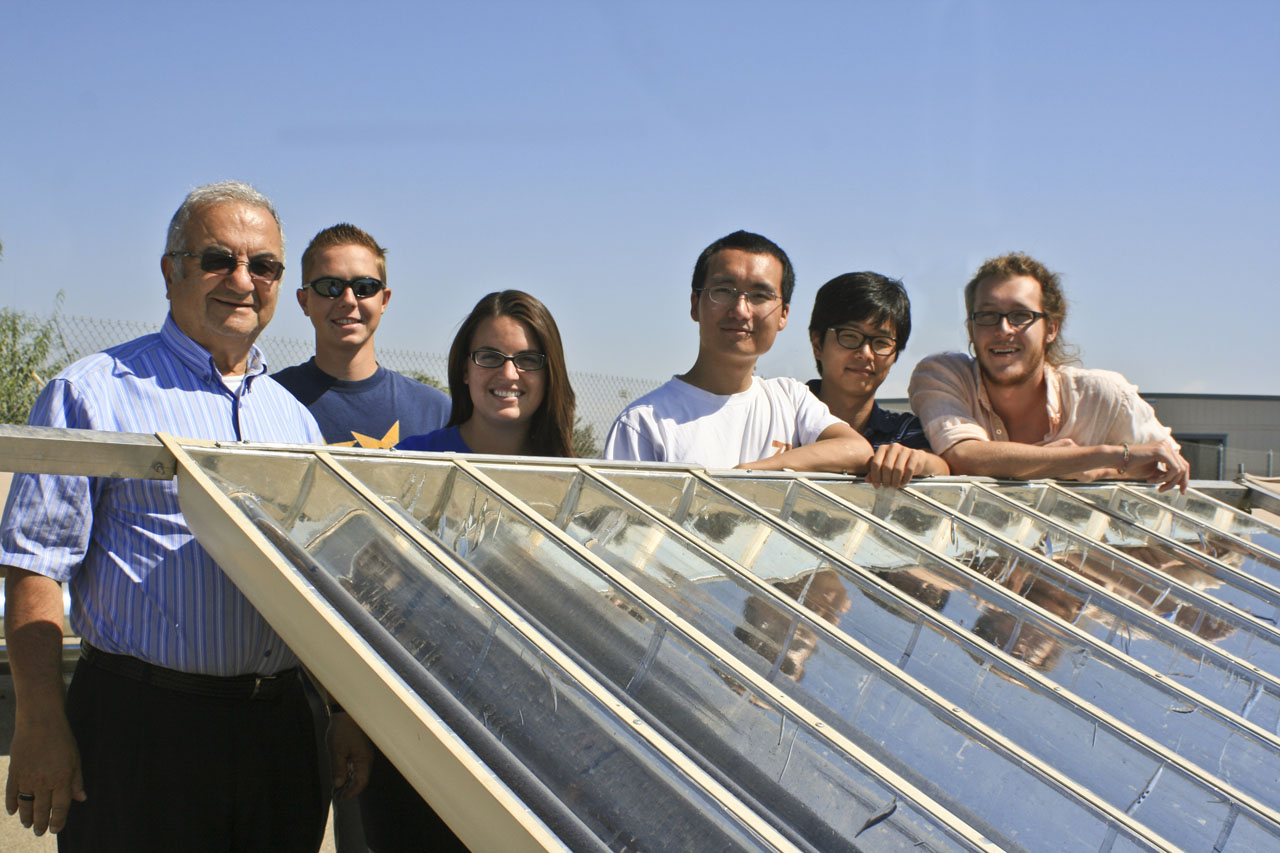
Right now, UC Merced has a one-megawatt solar array that spreads over eight acres and can produce 50% of the electricity required on campus – when the sun is shining, 16% overall. UC Merced is planning 200 acres of solar eventually, with a 25-megawatt array on the drawing board. Elliott also describes a novel approach to energy generation that is currently in development. It combines waste disposal and energy technology and is currently operated by the university as a pilot system; it may eventually become a major energy source for the campus. “Merced researchers and engineers have developed a plasma gasification system combining sewage and solid waste in a high-temperature, low-oxygen chamber to create electricity generation and heat,” explains Elliott, in an example of how university research and development intersects with facilities management in what many see as the next technological boom, alternative energy.
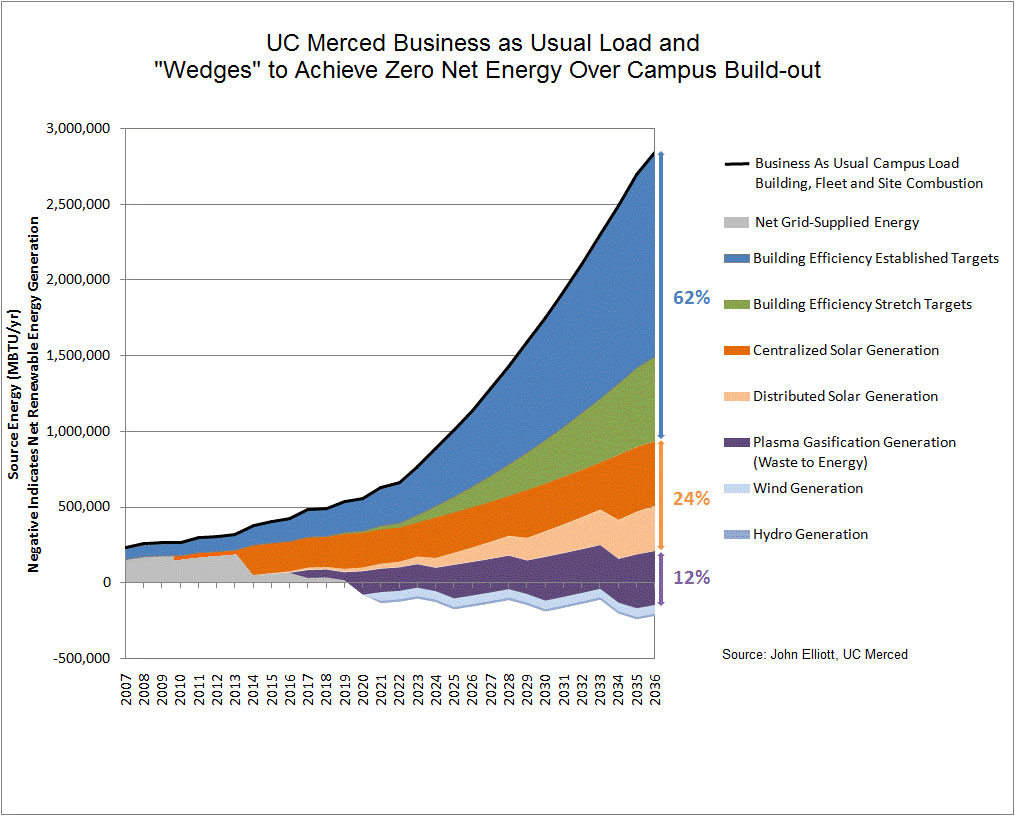
The University of Pennsylvania
The University of Pennsylvania was founded in 1749 by an organization of trustees led by Benjamin Franklin, who would be proud of the university's innovative stance. The University of Pennsylvania achieved an overall grade of B+ on the College Sustainability Report Card in 2011. Ali Malkawi, Ph.D., founder and director of the university’s T.C. Chan Center for Building Simulation and Energy Studies, says, “Over 86% of carbon produced by Penn is from building energy usage. If immediate actions are not taken to reduce energy on both institutional and individual levels, Penn will nearly double its total carbon emissions by 2050. To address this, Penn has established a goal to cut its campus energy use by 17% by 2014,” says Malkawi, explaining the T.C. Chan Center's plans to meet the goals of the ACUPCC. With only 12 buildings recommissioned following energy retrofits, the University of Pennsylvania is already saving $3 million annually.
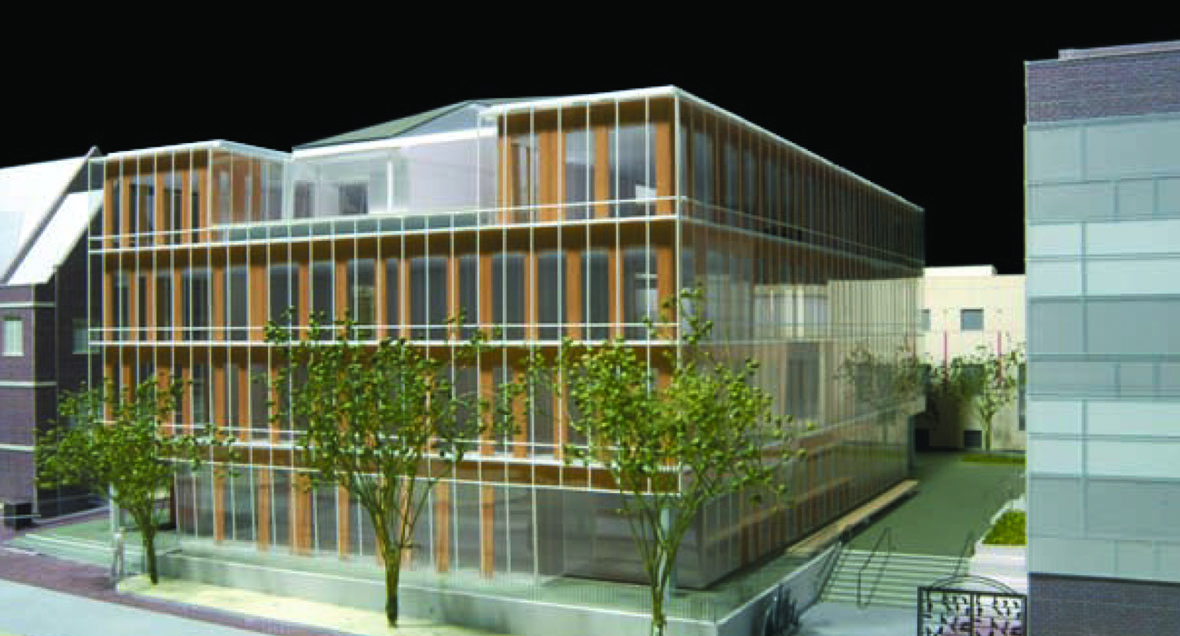

Solar studies for the Annenberg Public Policy Center included analysis of the wall cavity and its behavior during summer conditions, as well as an understanding of the site's shading patterns. Energy consultants also looked at air convection movement to ensure comfortable air and surface temperature levels for occupants within.
In describing the challenges of upgrading the campus, Malkawi explains that since most of the saving is related to systems operations, the main challenges of implementation are linked to ensuring that system “faults” can be predicted. By “fault,” Malkawi means that accurate measures and correction strategies have to be in place to make sure that all improvements actually function as well as the models predicted. “Fault detection strategies are required to ensure successful results. In addition, human factors are still a challenge; education and awareness issues must remain a prominent force in the overall plan,” says Malkawi.
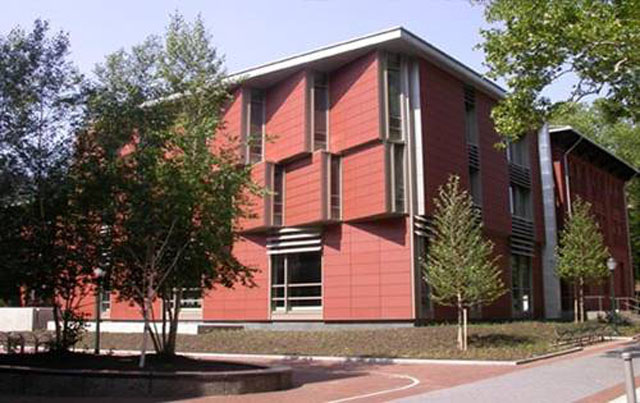
In the effort to reduce the campus’s carbon profile, Malkawi engages students and faculty at all levels, from undergraduate recycling efforts to graduate student studies of advanced, sustainable HVAC systems. “Faculty also respond to the initiatives by applying for grants in sustainable fields and developing new curriculum to incorporate green design and technology. There are now several committees that have faculty, students, and staff working on ensuring that Penn’s Climate Action Plan goals are implemented,” says Malkawi. The T.C. Chan Center has taken an international role as a partner member with the United Nations Environment Program Sustainable Buildings and Climate Initiative (UNEP-SBCI), working with stakeholders in various regions in the world from Sweden to China.
“Focusing on long-term research to advance knowledge and techniques, and educating students – the next generation of professionals – with the state-of-the-art knowledge that will allow them to change current practices is the most critical element for success,” says Malkawi, describing the university’s focus on environmental research and teaching, using the campus as a laboratory to show that a low-carbon economy is not only feasible but key to maintaining a competitive position in the world market.
This article is based in part on “Strategies for Energy," a white paper written by Steven Duval, PE.
- Strategies Energy Planning-Campuses (2824 Downloads)

Fernando Pages Ruiz
Homebuilder, developer and author Fernando Pagés Ruiz builds in the Midwest and Mountain States and consults internationally on how to build high-quality, affordable and energy-efficient homes. As a builder, his projects have numerous awards including the 2008 “Green Building Single Family House of the Year” and the 2007 “Workforce Housing Award” from the National Association of Home Builders. In 2006, the Department of Housing and Urban Development's PATH project chose him to build America's first PATH Concept Home, a home that is affordable to purchase and to maintain while meeting the criteria of LEED for Homes, ENERGY STAR, MASCO Environments for Living, and the NAHB's Green Building standards. A frequent contributor to Fine Homebuilding and EcoHome magazines, Pagés is also the author of two books published by the Taunton Press: Building an Affordable House: A high-value, low-cost approach to building (2005) and Affordable Remodel: How to get custom results on any budget (2007).
Contact Fernando on facebook or by way of his website buildingaffordable.com.


